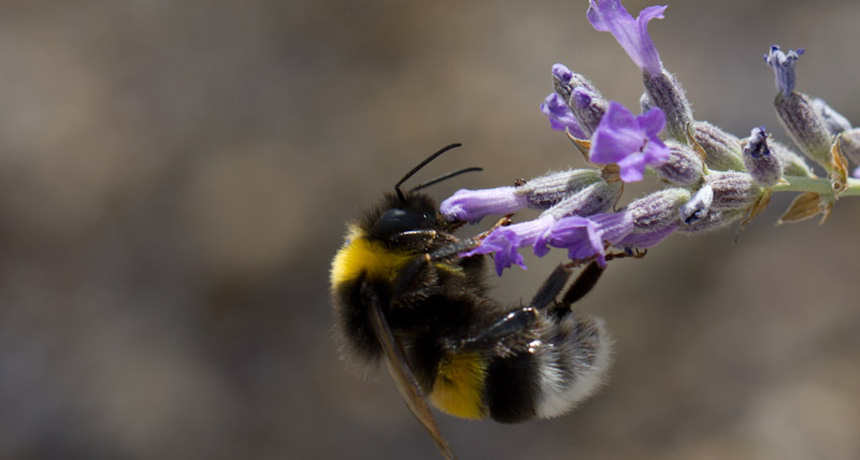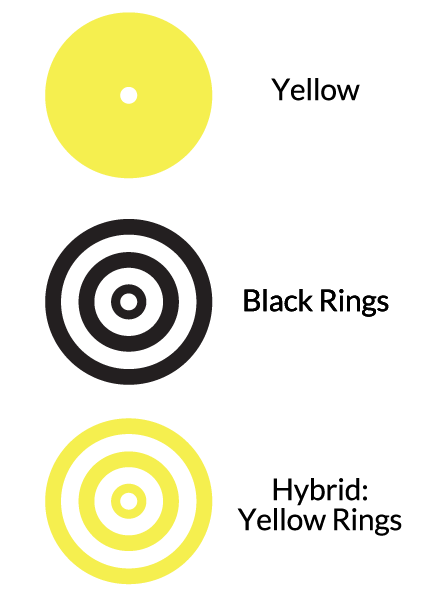Bees may merge their flower memories
Experiments show that colors, patterns signaling treats get mixed up on later visits

SUGAR RECALL Buff-tailed bumblebees (one shown) may merge memories of flowers that they’ve visited in the past, which may influence the blooms they explore in the future, a new study suggests.
q_ilex/Flickr (CC BY-NC-ND 2.0)
- More than 2 years ago
Humans may not be the only ones to mix up old memories. Bumblebees seem to do it, too.
Using fake flowers, researchers in London have shown that bumblebees sometimes prefer to visit a flower that combines the colors and patterns of flowers the bees previously visited – even if they’ve never seen the combo flower before. Preferring the novel flowers suggests that the bees are merging memories of what they’ve seen in the past, the researchers report in the March 16 Current Biology. The team argues that it’s the first example of memory merging in a nonhuman animal.
“We suspect that memory merging may be as common in animal minds as in human minds, but no one has explored this in animals before, so to find it in bumblebees was exciting,” says study coauthor Lars Chittka, a biologist at Queen Mary University of London.
Lesley Rogers, a neuroscientist who studies animal behavior at the University of New England in Armidale, Australia, says animals probably do merge old memories and make new, false ones, similar to the way humans do. But she says more works is needed to see if the bees change their flower preferences because they are truly combining past memories.
In the new study, Chittka and Kathryn Hunt, also of Queen Mary, trained buff-tailed bumblebees (Bombus terrestris) to associate artificial flowers with a sugary reward. One group of bees got a sugar reward first from a fake yellow “flower” — a yellow circle — and then from one with black and white concentric circles. The other group of bees got the sugar from the black- and white-ringed flower first and then the yellow one.
Immediately after training, the bees were given 20 chances to choose another reward from either the yellow flower, the black- and white-ringed one or a third one with yellow rings — a hybrid of the original two. In these trials, the bees repeatedly chose to return to the flower they had most recently visited.

In trials one to three days later, bees that visited the yellow flower first and then the black-and white-ringed one continued to return to the black- and white-ringed ones. Bees that initially visited the black- and white-ringed flower and then the yellow one started out by repeatedly choosing to take a reward from the solid yellow one. But gradually, over the 20 trials, these bees’ preferences changed: They began picking the hybrid flower with yellow circles.
Separate experiments with blue flowers yielded similar results. Choosing the hybrid flower suggests that the bees are merging their long-term memories of the flowers, Chittka and Hunt report.
Why the bees changed their preferences to favor the hybrid only when they visited the black and white flower first is not clear, Chittka says. But, he argues, if the bees were generalizing from the last flower they saw — the yellow one, for example — they would later pick similar ones that also contain yellow coloring, no matter the pattern. If the bees had simply forgotten which flowers were rewarding, then they would have picked all the flowers at random. Neither behavior was observed. Instead, the bees often picked flowers with merged patterns and colors of ones seen previously, which means the bees could not be generalizing or simply forgetting, he says.
Despite the results, Rogers says she is still not sure generalization and memory merging are completely different. But, she says, the method used to test bees in this study will be valuable in determining the distinctions.






